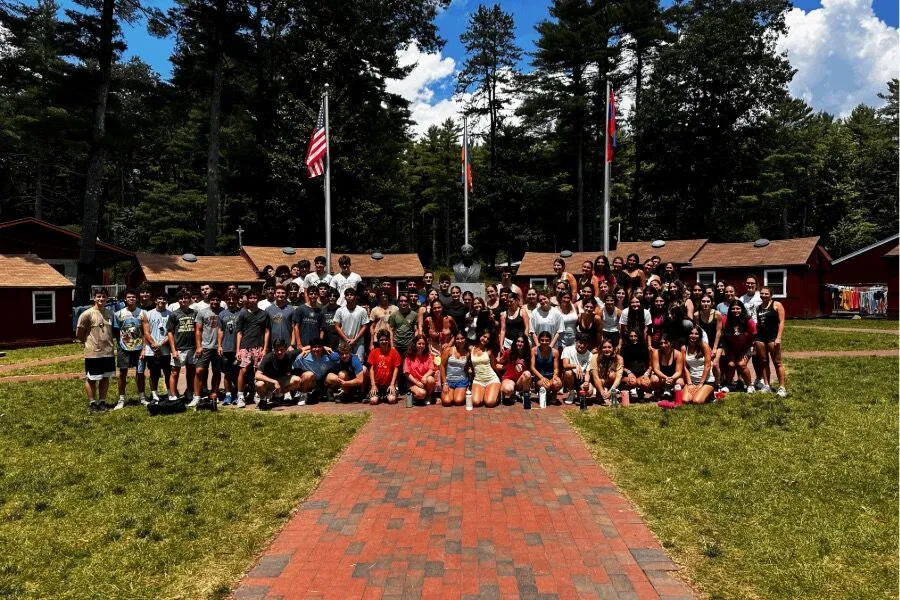
Every summer, AYF Camp Haiastan re-establishes itself as more than just a camp. For young diasporan Armenians, it’s a vibrant hub where identity takes root, friendships last a lifetime and the past feels vividly alive. This year, the Zartonk Teen Session added something special to the mix: a deep dive into genealogy. Led by program director and summer director Degeen Seran Tcholakian, the initiative went beyond the usual camping experience—it asked campers to dig into where they came from and why they are here.
Campers didn’t just hear about Armenian history—they held it in their hands. From tracing family trees to meeting prominent diasporan leaders, they connected with real stories, real artifacts and real people who have dedicated their lives to preserving Armenian history.
What makes Camp Haiastan particularly special is how it seamlessly blends education with experience.
They speak the language, perform the dances, sing the songs and, most importantly, understand the sacrifices and stories of their ancestors.
Camp serves as a sanctuary for cultural exploration. Whether commemorating the Armenian Genocide or celebrating Armenian Independence Day, campers grow up knowing their history matters. This summer’s capstone project on genealogy was a natural extension of that philosophy, giving campers the tools to dive into their personal histories and discover what it truly means to be Armenian.

Launching the project
In a community where identity is threatened by assimilation, genealogy becomes a bridge to the past. For Armenian youth, many of whom are generations removed from the homeland, tracing their family lineage is a powerful act of reclamation.
The Teen Session’s capstone project leaned into this truth. The idea was simple in theory: help campers understand where they come from so they can better understand who they are today. The execution, however, was a rich, layered and deeply meaningful experience.
Genealogy empowers young Armenians to ask big questions: “Where did my ancestors live before the genocide?”, “How did my family come to America?”, “What traditions were passed down?”, “What was lost and what can I reclaim?” Those questions didn’t just teach history; they shaped identity.
The pre-camp homework: Family trees
Before campers even set foot at camp, they received a family tree template and a mission: Go talk to your elders. This preliminary task acted as a conversation starter, meant to spark intergenerational dialogue within their families.
Campers arrived at their Hye Jahm lessons with papers filled with names, dates, cities, villages and stories. Some had photos of great-grandparents who survived the genocide. Others had stories of migration, rebuilding and resilience. The camp then built upon these personal histories with structured sessions, discussions and a deeper dive into Armenian genealogy.
By the time camp officially began, the project was already in full swing. Campers were no longer just attendees but rather historians of their own lineage, ready to uncover the deeper truths behind their family names and shared experiences.

An immersive experience with storyteller Ani Hovannisian
If there’s one person who understands the emotional weight of tracing one’s roots, it’s Ani Hovannisian. As a journalist, filmmaker and preservationist, Hovannisian has dedicated her life to uncovering the hidden stories of Armenians who were displaced, forgotten or left behind.
She is best known for her powerful documentary, The Hidden Map, which chronicles her own journey through historic Western Armenia. In the film, she meets local Turks and Kurds who reveal long-lost Armenian ties, explores ancient ruins and reflects on the resilience of the Armenian spirit.
Hovannisian’s presence brought a tangible sense of urgency and significance to the genealogy project. After the screening of her film, she opened the floor to questions—and the room came alive. Campers asked about her experiences, the emotional toll of her journey and how they, too, could explore their family histories.
She guided them through research tips, shared anecdotes and emphasized that every Armenian family holds a piece of the puzzle. She reminded campers that all Armenians are keepers of a past worth preserving. Her biggest takeaway? “Don’t let your past disappear. If you don’t remember, who will?”
The experience left campers inspired not just to trace their family trees but to become the storytellers of their own legacies.

A pilgrimage to NAASR
To build on their genealogy journey, Teen Session organized a field trip to the National Association for Armenian Studies and Research (NAASR) in Belmont, Massachusetts.
For many campers, it was their first time inside a formal institution dedicated to Armenian research—and it blew them away. The modern building, curated exhibits and wall-to-wall libraries all spoke to the rich intellectual tradition of the Armenian people.
Campers were warmly greeted by Marc Mamigonian, NAASR’s director of Academic Affairs, and Ani Babaian, library curator and a key figure in Armenian cultural preservation. Lerna Merdinian, professor of history and director of the Women and Gender Studies at MIT, also addressed the group, speaking passionately about identity, belonging and the profound impact that Camp Haiastan has had on generations of Armenians, including her own family.
Campers were then given a guided tour of NAASR, walking through aisles of ancient manuscripts, scholarly works and rare publications. Many had never seen their heritage so meticulously archived. It was an empowering experience and a clear reminder that Armenian history is not just a memory but a living, breathing entity that must be protected and passed on.
This article was originally published on The Armenian Weekly.

